What Happens to My TUE?
In some situations, an athlete may have an illness or condition that requires the use of medication listed on the World Anti-Doping Agency’s Prohibited List. USADA can grant a Therapeutic Use Exemption (TUE) in these situations in compliance with the WADA International Standard for TUEs. The TUE application process is thorough and designed to balance the need to provide athletes access to critical medication while protecting the rights of clean athletes to compete on a level playing field.
The health and well-being of the athlete must always remain the priority. Consequently, while it is always preferable for athletes to apply in advance for a TUE, this is not always possible, especially when athletes require immediate or emergency medical treatment. The health and safety of the athlete is paramount, and no treatment should be withheld that would result in the athlete’s health being compromised.
Here’s what you need to know about the journey of a TUE, from the diagnosis to the TUE decision.
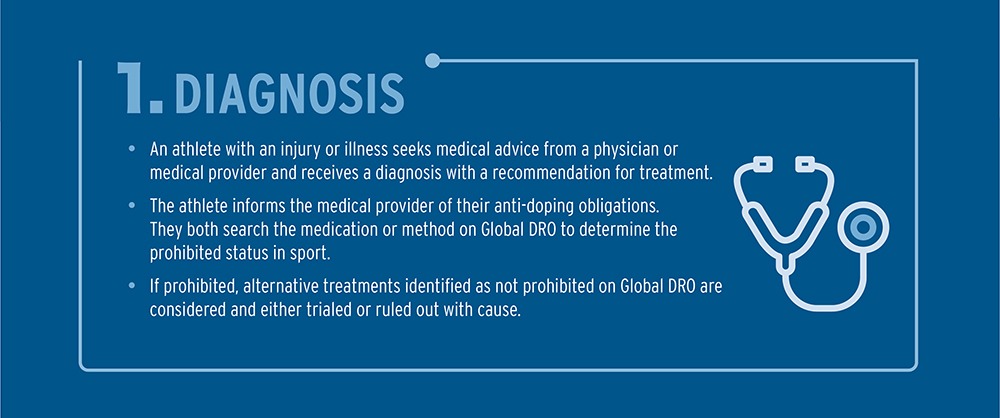
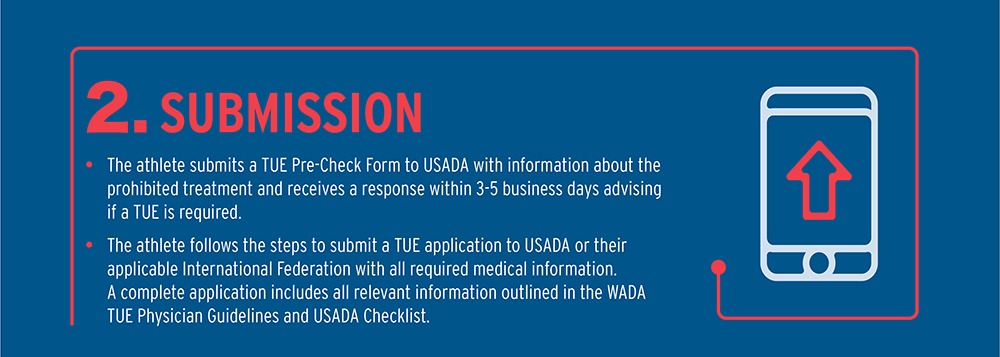
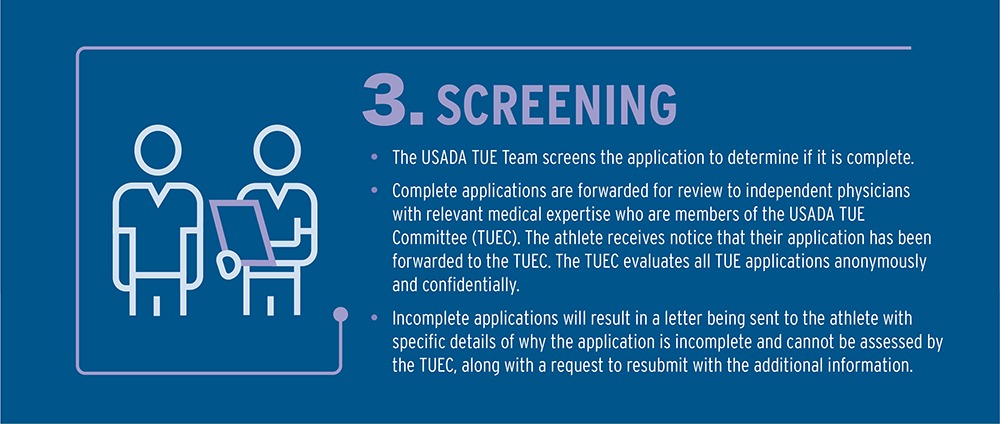
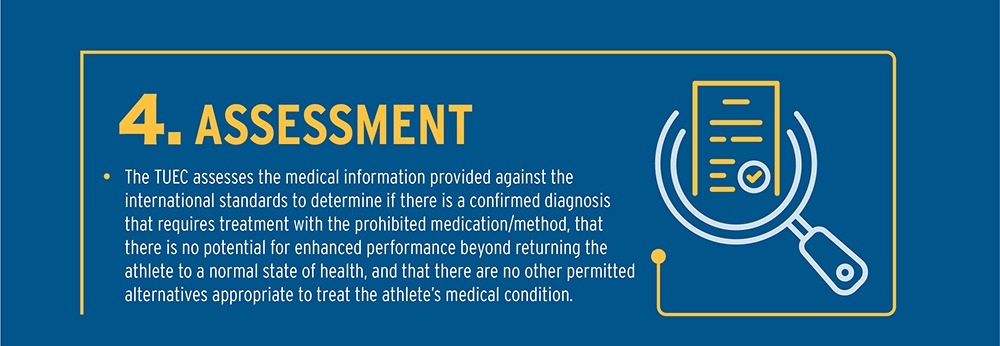
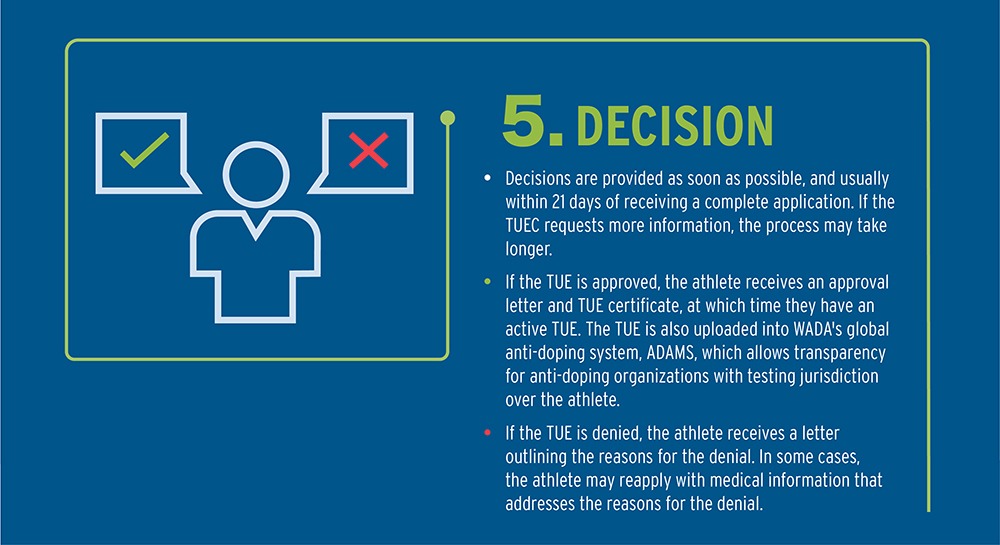
Need a TUE?
More questions?
Athletes and athlete support personnel can contact TUE@USADA.org with more questions about substances, methods, and TUEs.
Learn more about the Therapeutic Use Exemptions.


